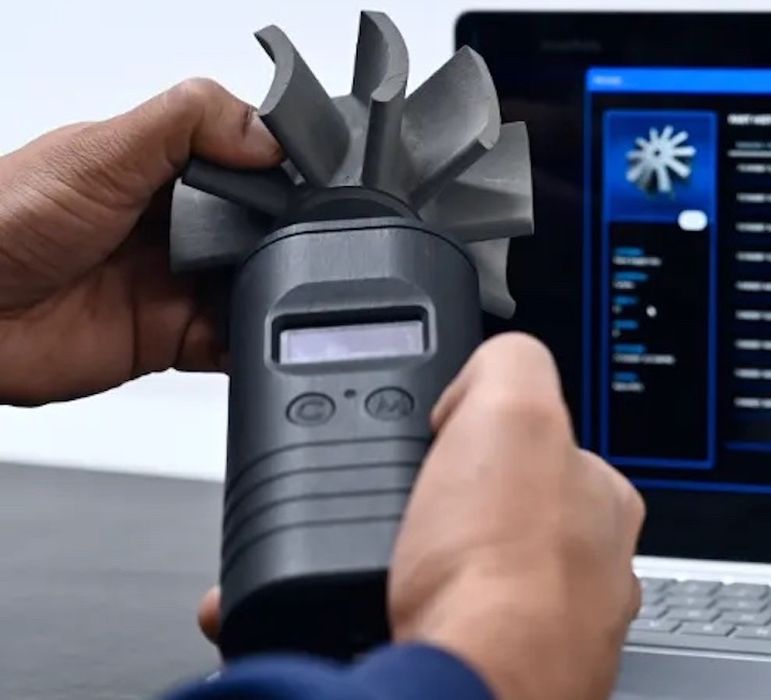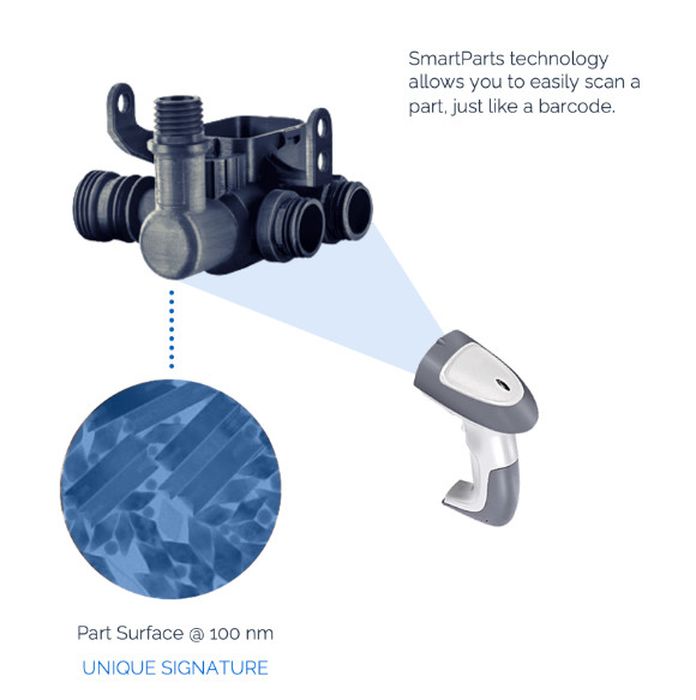
SmartParts named joint winner of the first round of Hexagon’s Sixth Sense startup innovation platform.
SmartParts, a U.S.-based startup that has developed digital barcodes for 3D-printed parts, was recently named a joint winner in the first leg of Hexagon’s Sixth Sense open innovation platform. The company was chosen after an eight-week, hands-on training program.
Hexagon announced the Sixth Sense platform, which is being headed by the company’s Manufacturing Intelligence division, in January 2022. The idea behind the concept was to work with tech startups to combine resources and boost the move toward smarter manufacturing.
“We are searching for intelligent, efficient solutions that will not only enhance performance but benefit people and the planet,” said Parth Joshi, chief product and technology officer of Hexagon’s Manufacturing Intelligence division. “Industry 4.0 is evolving and pushing to solve complex challenges, but the catch is that you cannot solve big problems without solving lots of little ones at each step with innovation.”
SmartParts and RIIICO were named joint winners of the sustainable smart manufacturing theme. Additional Sixth Sense training programs will be held for big data, machine learning, artificial intelligence, and sensors and robots.
About SmartParts
The SmartParts seed was unknowingly planted in 2013 when CEO and cofounder Robert Haleluk was introduced to 3D printing while overseeing an injection molding facility. In 2016, he founded Print Parts to further innovate additive manufacturing (AM). Cody Burke, SmartParts cofounder and chief operating officer with more than 12 years of AM experience, along with Haleluk, soon formed a partnership focused on the challenges of mass adoption of the technology.
While AM has been around for decades, it has primarily been used for prototyping. Thanks to new technologies available for materials, machines, software and workflows, AM has grown exponentially. As AM has become more prominent in various manufacturing applications, traceability has become an issue.
“Because of the democratized nature of additive manufacturing, it increases the risks of counterfeiting and risks into the supply chain because you can print parts that can fool a good aerospace engineer off of a pretty simple desktop system,” says Burke. “It introduces a whole bunch of complexity and existing quality management systems, and traceability solutions aren’t really adapted for a fully digital process like additive manufacturing. The lack of those solutions is holding back adoption for real production.”
The startup, established in 2020, developed embedded digital barcode technology to address the traceability issue. The technology is designed to connect physical parts with digital records throughout the manufacturing process. While there are other similar technologies, SmartParts uses photonic crystals in its barcodes that enable precise control and unique signatures, which are impossible to reverse engineer.
“Our technology is distinct from existing taggant technologies in a couple of different ways—primarily it’s the customization,” says Burke. “We have the ability to take these particles with a high level of fidelity and control where size and shape is able to be mixed into different materials. [With] metal powder, for example, you want a very different size particle than, say, a resin or even a filament. We can control the unique optical response off of these particles.”
According to the company, its proprietary Intelligent Material programmable particles “convert IR [infrared radiation] energy from one wavelength to another by absorbing then emitting energy from anywhere within the electromagnetic spectrum.” This provides the variable control that enables the creation of trillions of unique codes. The Intelligent Material taggants can be added at any point in the process, from once a material is received to during printing or after the part is printed. For manufacturers with strict environmental, social and governance (ESG) and International Traffic in Arms Regulations (ITAR) compliance requirements, such as in aerospace, the SmartParts technology may offer benefits that existing technology doesn’t provide.
“Other solutions on the market for traceability—barcodes, laser etching, RFI—they pick up at the point of manufacturing and have to be added after a part is manufactured,” says Burke. “Whereas our technology is embedded. You can scan and pull up information around a material from the compounding all the way through the part’s life. So, it’s a true end-to-end digital record number of a part or end material.”

Along with discreet traceability, SmartParts claims that its Intelligent Material is highly durable, resistant to high temperatures and forces, and detectable at parts per million concentrations. Intelligent Material is designed to be an end-to-end solution, and the company has also created software and scanners.
“Because we have this integrated solution of the materials—the scanners and the software—it’s a relatively easy technology to adopt for a manufacturer because they’re using the same materials they always did,” says Burke. “They don’t have to change their workflow on that side. Because it’s integrated and embedded, that traceability stays with it for its entire life cycle. So, the barrier to adoption is relatively low for an organization to use this technology.”
Read the rest at ENGINEERING.com
